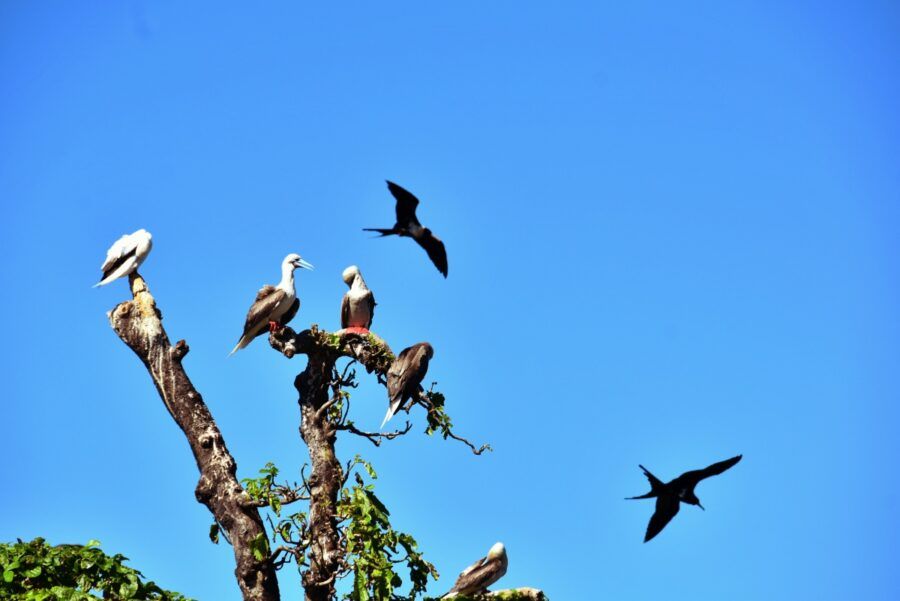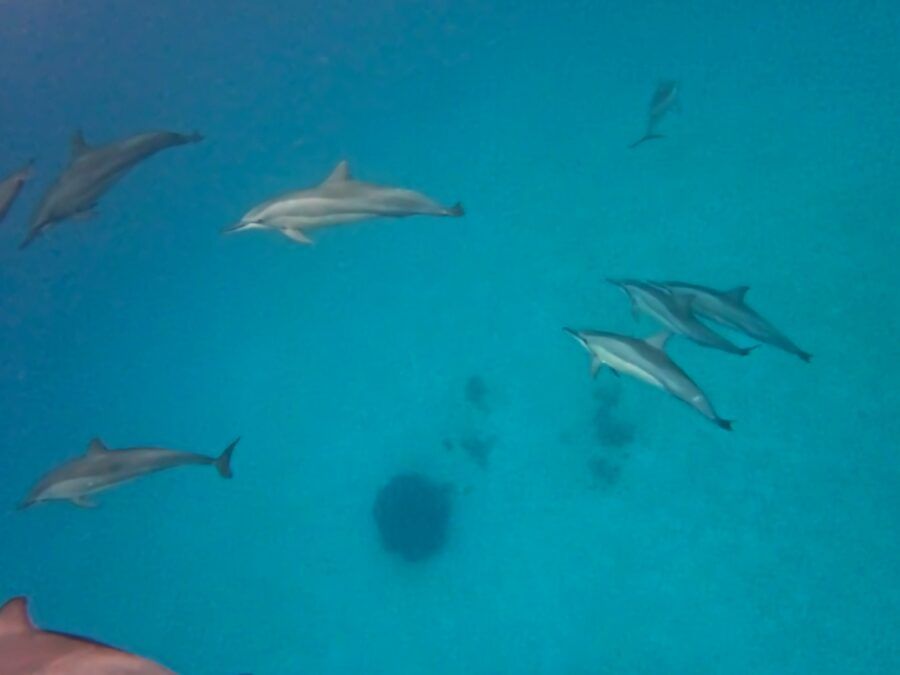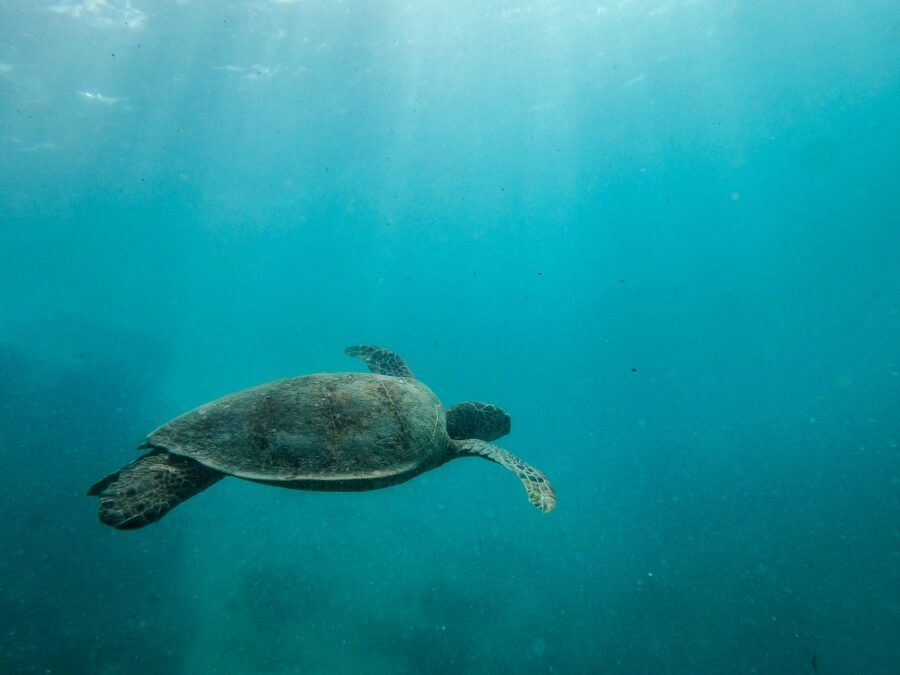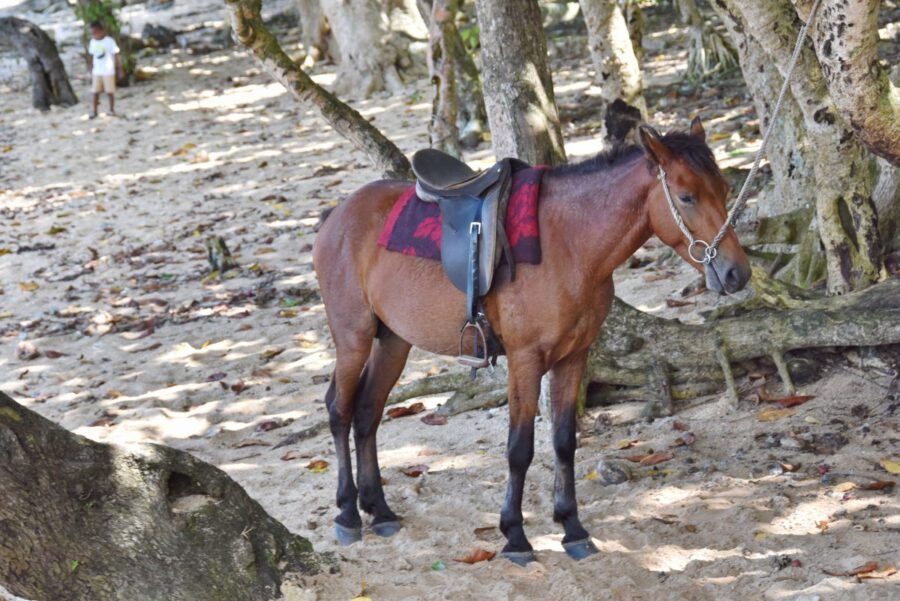About the Flora and Fauna of Fiji
Fiji is famous for its island escapes and white sandy beaches. However, delve into those crystal clear waters surrounding the islands or into the heart of any forested island, and you’re likely to encounter some exciting and mysterious wildlife.
While Fiji is home to reptiles, birds, insects and more, what attracts people to Fiji the most is the lure of the aquatic life. With crystal clear waters, snorkelling or diving among the coral reefs will transport you to another world.
A wealth of marine life lives in Fiji’s waters, from thousands of colourful tropical fish to majestic sharks and giant manta rays. This guide to the wildlife in Fiji will go over the most common wildlife species to look for when travelling the islands, as well as a few fun facts about Fiji’s most fascinating creatures.
Whether you’re into fish, birds or trees, there’s something for every type of nature-lover in Fiji.
Table of Contents
5 Fun Facts About Fiji Wildlife
Fiji’s wildlife is as diverse and fascinating as its lush landscapes. From vibrant coral reefs to rare bird species, this tropical paradise is teeming with unique creatures.
Here are five fun facts about Fiji’s wildlife that will make you want to pack your bags and explore this natural wonderland!
- Fiji has no native land mammals except for bats.
- Scuba diving with bull sharks is a popular tourist activity!
- There is only one venomous species of snake (which is rarely seen and would hurt you unless severely provoked).
- Fiji is known as the “Soft Coral Capital of the World”, making for amazing snorkelling.
- Giant manta rays visit the Yasawa Islands from May to October.
These are just some incredible wildlife experiences waiting for you in Fiji. For more fascinating tidbits about this South Pacific gem, check out our article on 15 Fun Facts About Fiji. In the meantime, let’s get back to our complete wildlife guide to Fiji.
 © FijiPocketGuide.com
© FijiPocketGuide.comMarine Species in Fiji
With the abundance of coral reefs, the waters of Fiji are teeming with an array of tropical fish species and other marine animals. Fiji is home to more than 1,500 different fish and other aquatic species, so there are lots to see when boating, snorkelling or diving in Fiji’s warm waters.
In turn, this attracts larger marine wildlife, such as whales, dolphins and more.
Fish Species in Fiji
Fiji is known as the “Soft Coral Capital of the World”, so as you can imagine, there is a great deal of reef fish to be found. Colourful species like parrotfish, butterflyfish, angelfish, anemonefish, unicornfish, ribbon eels, goatfish, lobsters, frogfish, sea horses, starfish, eels and many more fascinating aquatic species occupy the coral reefs of Fiji.
Localised fish include the Fiji anemonefish. Some of the bluewater fish found in the waters surrounding Fiji are yellowfin tuna, flying fish, wahoo, mahimahi, moonfish, Pacific barracuda, blue marlin and just about anything you might like to reel in on a fishing charter.
Find out more in our guide, Fishing in Fiji: The Types of Fish in Fiji.
Sharks in Fiji
One of the most breathtaking marine species that travellers can see while in Fiji are sharks. While white-tipped and black-tipped reef sharks are the most common shark species you are likely to see in Fiji’s reefs and inner waters, you could also see tawny nurse, grey reef, sicklefin lemon, silvertips, bull, tiger, leopard (zebra), scalloped hammerhead, great hammerhead sharks, and guitarfish.
Hammerheads and other shark species are likely to be seen in the open seas. Check out the 5 Best Places to See Sharks in Fiji for more information on shark encounters.
Sea Turtles in Fiji
Lesser seen than sharks, sea turtles also occupy Fiji’s waters. Unfortunately, due to human impacts, turtles are less abundant in Fiji than they once were. However, it is still possible to see around five different species of sea turtles: hawksbill, loggerhead, green, Pacific, leatherback and ridley.
The most common encounters with turtles in Fiji are with the green turtle, seen foraging on seagrass beds or nesting on sandy beaches (which happens from November until March). Learn more about turtle encounters in the 10 Best Places to See & Swim with Turtles in Fiji.
Manta Rays in Fiji
The largest species of ray in the world, manta rays are on everyone’s bucket list. Manta rays are seen seasonally through various passages around Fiji, particularly in the Yasawa Islands, Kadavu and between Vanua Levu and Taveuni. Other species you may encounter include reef manta rays, bluespotted ribbontail rays, bluespotted stingrays, giant reef rays, and spotted eagle rays.
Find out where and when to see them in The Guide to Swimming with Manta Rays in Fiji.
Marine Mammals in Fiji
Whales and dolphins are protected in Fiji’s waters, but sightings are largely dependent on luck. Pods of dolphins and pilot whales inhabit Fiji’s waters year-round, while species like humpback whales, false killer whales, sperm whales, minke whales and fin whales migrate through Fiji every year – see The Best Places to See Whales in Fiji to learn more.
Dolphin species you may encounter include spinner dolphins and bottlenose dolphins, which you can encounter on dolphin cruises as listed in the 5 Best Places to See Dolphins in Fiji.
Corals and Anemones in Fiji
Fiji has around 400 species of coral. This impressive number represents about 42% of all known coral species globally. The coral diversity in Fiji can be broken down as follows:
- Hard corals: Around 333 different species of hard (stony) corals have been recorded.
- Soft corals: Approximately 80 species of soft corals are found in Fijian waters
Needless to say, you should never touch corals, not only because they are easily damaged and takes a long time for coral to grow, but because coral cuts can give nasty infections – see our Fiji Safety Tips.
Giant Clams, Oysters, Crabs, Starfish and More
Our final aspect of marine wildlife in Fiji is hard-shell and soft-shell marine animals, starting with giant clams. There are four native species of clams and giant clams in Fiji: tridacna gigas, tridacna squamosa, tridacna derasa and tridacna maxima.
Due to the rapid depletion of clams that are harvested as a food delicacy, there are conservation efforts in place to keep the populations stable, for instance, the giant clam nursery at Makogai in the Lomaiviti Islands and Viani Bay Resort between Vanua Levu and Taveuni.
In the waters of Taveuni and Savusavu, black lip pearl oysters have their natural habitat and are also farmed for their black pearls used in jewellery.
Crabs are in abundance across the islands of Fiji; most commonly, you’ll see hermit crabs scuttling across the beaches, while, although not a marine mammal since they always stay on land, coconut crabs are the largest species of crab in the world – now only found on remote islands in the Lau Group like Vatuvara. Crayfish (lobsters) are prolific on the reefs.
A few other honourable marine species mentions include the blue starfish, which you’re likely to see on just about any scuba diving trip. There are also octopus and the bluebottle jellyfish known as the “man-o-war”, whose venomous tentacles are unlikely to be seen in the lagoons where most people swim.
Learn more about the whale and dolphin seasons in Fiji in The Best Seasons for Seeing Wildlife in Fiji.
 © FijiPocketGuide.com
© FijiPocketGuide.comBirds in Fiji
Travellers to Fiji will get the chance to encounter some of Fiji’s colourful and fascinating bird species.
Fiji is home to approximately 76 native bird species, 27 of which are endemic to the country. Parrots, petrels and doves make up some of the incredible bird species that you could see while exploring the forests of Fiji’s larger islands.
Endemic Birds in Fiji
Some noteworthy birds to look out for in Fiji include:
- Fiji Woodswallow – These white and black birds, endemic to Fiji, are seen in lowland forests and even in some urban areas.
- Musk Parrot – With bright red, green and blue plumage, the musk parrot, otherwise known as the crimson shining parrot or red shining parrot, is one of the most recognisable birds in Fiji.
- Collard Lory – Similarly coloured to the musk parrot, the collard lory is a smaller bird that is usually seen in groups.
- Sukphur-breasted Myzomela – These are some of the smallest birds in Fiji. The sukphur-breasted myzomela has a yellow chest and a red crown.
- Fiji Goshawk – This raptor bird occupies forested areas of Fiji and is about 30-40 cm (11-15 in) long.
- Red-Throated Lorikeet – One of Fiji’s rarest birds, the red-throated lorikeet is a small lorikeet found on Fiji’s larger islands.
- Orange Fruit Dove – You’ll know it when you see it with its orange “flame-like” body and olive-coloured head.
- Fiji Parrotfinch – Look out for this colourful bird with a bright green body and red head and tail, commonly seen throughout Fiji.
Seabirds in Fiji
Unsurprisingly, the islands of Fiji are a refuge for many seabirds. Some of the commonly sighted seabirds include white terns, sooty terns, red-tailed tropicbirds, white-tailed tropicbirds, lesser frigates, great frigates, red-footed boobies, masked boobies, black noddies and brown noddies.
For more information on the birds in Fiji, take a look at the 10 Best Places to See Birds in Fiji and the 20 Animals & Birds Only Found in Fiji.
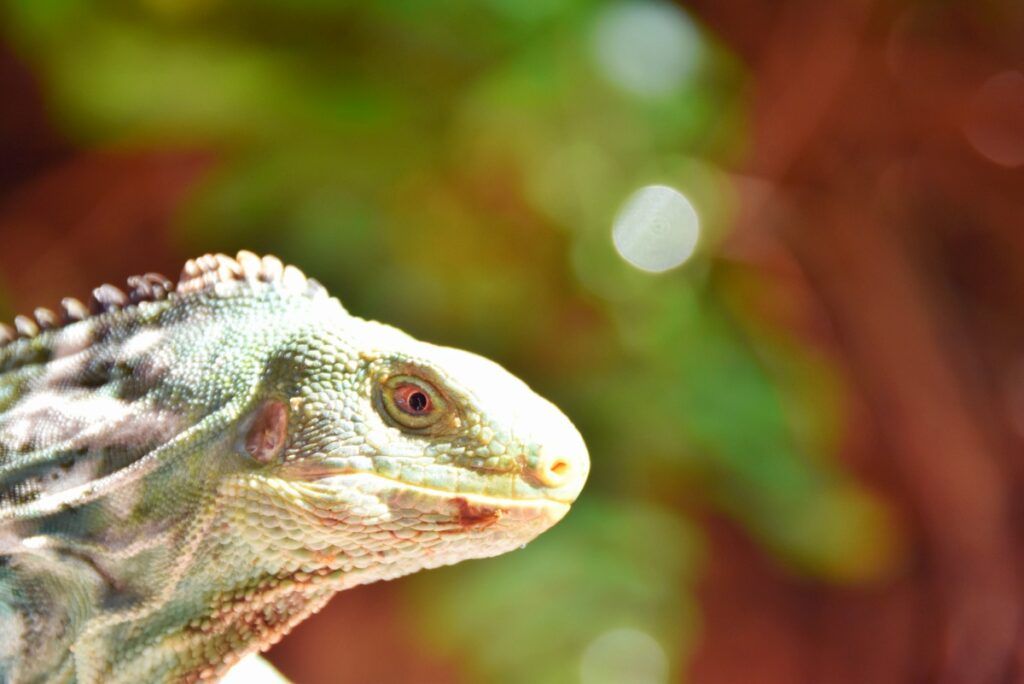 © FijiPocketGuide.com
© FijiPocketGuide.comAmphibians and Reptiles in Fiji
A number of amphibians and reptiles can be found in Fiji, including snakes, iguanas, frogs and geckos.
Frogs in Fiji
There are two endemic species of frogs in Fiji, the ground frog and the tree frog. The ground frog is a threatened species, while the tree frog is known for both males and females producing mating calls (in contrast, it’s typically only the male that calls in other frog species). Otherwise, the introduced cane toad is very commonly seen in Fiji.
Iguanas in Fiji
Probably one of the most impressive lizard species found in Fiji is the Fiji banded iguana. The males of this large emerald-green lizard have vertical stripes, while the females are all green.
Their long tails make up for more than two-thirds of the iguana’s total length. Another iguana species is the critically endangered Fiji crested iguana, which is found only in the dry forest on the northwestern islands or in captive breeding programs at Kula WILD Adventure Park and the iguana sanctuary at Malolo Island Resort and Likuliku Lagoon Resort.
Snakes in Fiji
Fiji has a number of snake species, including three species of sea snakes. The black and white banded sea snake is the only venomous sea snake but are usually relaxed and will not attack people unless severely provoked.
On land, the Pacific boa is a nocturnal and well-camouflaged snake, so you’ll be lucky to see one. This snake is not poisonous and only feeds on mice and lizards.
Skinks and Geckos in Fiji
Small skinks are one of the most common types of wildlife you’ll see in Fiji, not afraid to inhabit resorts (or pretty much anywhere else). They’ll hurry away if approached. Geckos are more commonly seen at night and the species in Fiji are the Rotuma forest gecko and Fiji forest gecko.
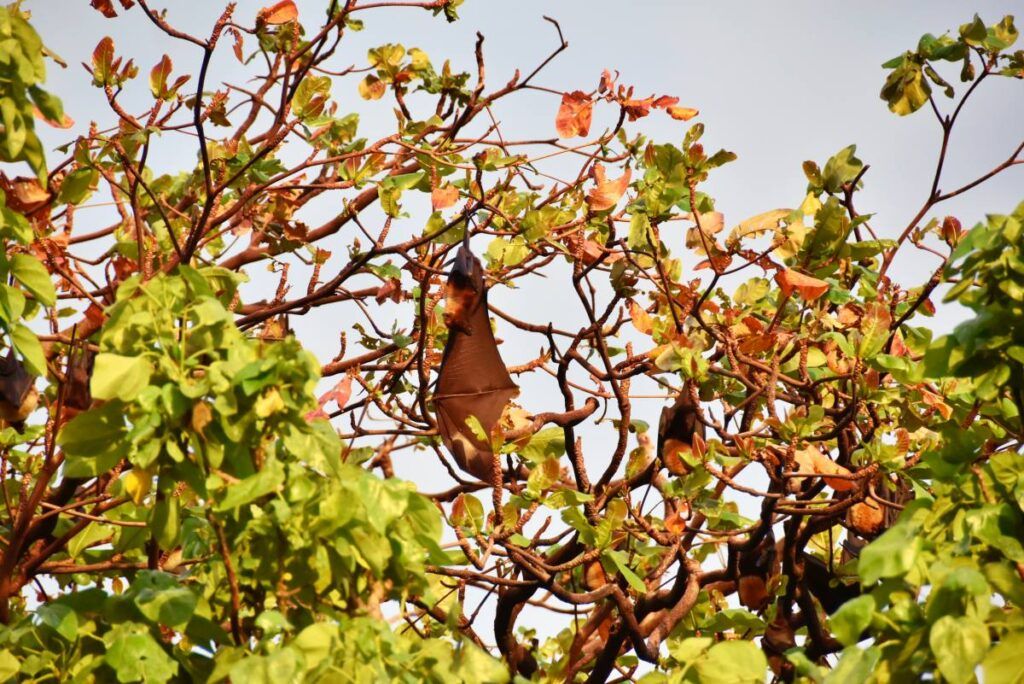 © FijiPocketGuide.com
© FijiPocketGuide.comLand Mammals in Fiji
Fiji’s only native land mammals are six species of bats. Only one of those bat species is endemic to Fiji, the Fiji monkey-faced bat. This bat species can only be found in the highland region of Des Voeux Peak (Koroturanga Mountain) on Taveuni. There’s also an amazing bat colony on the beach of Garden Island Resort.
Out of the six species of bat found in Fiji, four of them eat fruit. The other two species, the Polynesian sheath-tail bat and the Fijian mastiff bat, eat insects.
All other land mammals found in Fiji, like dogs, cats, rats, pigs, etc. are introduced species.
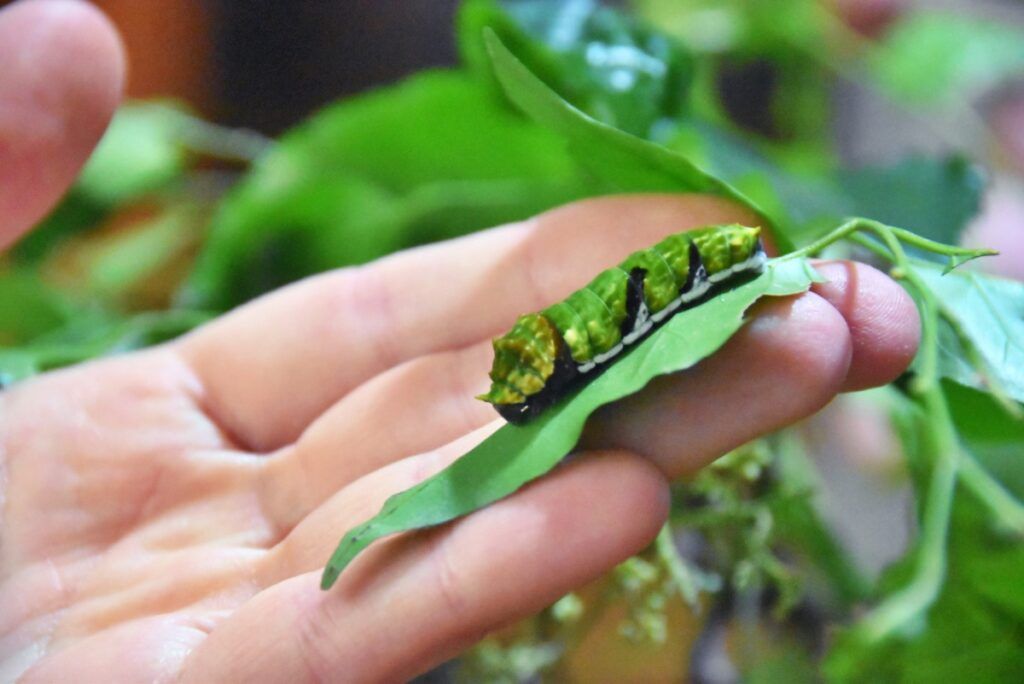 © FijiPocketGuide.com
© FijiPocketGuide.comInsects in Fiji
First of all, there are no dangerous insects in Fiji. While there are mosquitoes, you will want to wear insect repellent to avoid bites (see our 10 Ways to Avoid Mosquito Bites), they do not carry malaria.
For all you bug lovers, you can expect to see butterflies, moths, spiders, and stick insects in Fiji.
Endemic butterfly species include the Fiji swallowtail, while a common moth species is the sphinx mot,h which can grow a wingspan of up to 15 cm (6 in) – the Natewa swallowtail butterfly was recently discovered on the Natewa Peninsula on Vanua Levu. There are also several species of large spiders however, they tend to make their webs high in the forest canopies, so it is not often that you will see them.
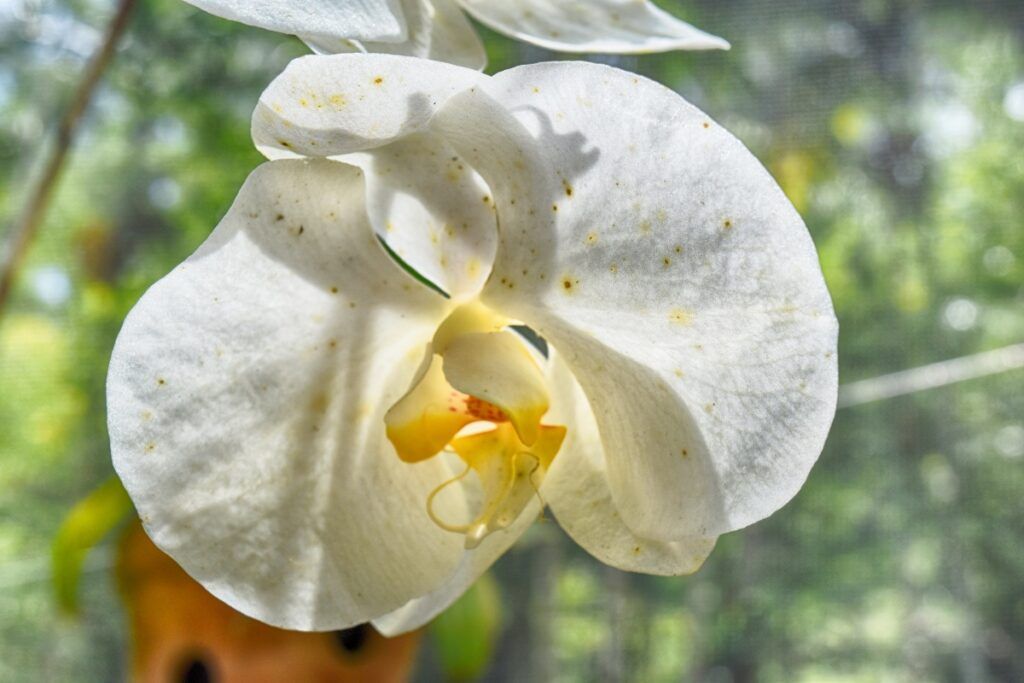 © FijiPocketGuide.com
© FijiPocketGuide.comPlants and Vegetation in Fiji
Fiji’s iconic beaches are lined with a variety of pine tree species, while more vibrant flowers and vegetation can be found in the interior tropical forests.
Trees found on Fiji’s beaches include fishtail, silver, umbrella and coconut palms. Look out for trumpet-like flowers of the beach morning glory trees.
Fiji’s coastlines are also lined with mangrove forests. These flooded forests are crucial for the ecosystem of Fiji, while also strengthening and protecting the coastline from the warm waters.
Other common tree species include Mallotus tiliifolous, which has hairy leaves and spiny fruit, and the Indian-beech with aromatic flowers. The Tahitian gardenia is also an attractive plant with white blossoms.
A great example of tropical flowers and vegetation lies just a short drive from Nadi on Viti Levu; the Garden of the Sleeping Giant is a fine representation of the tropical Fiji forest, hosting 30-40 native orchids and cattleya hybrids.
More About Wildlife in Fiji
That’s it for our guide to wildlife in Fiji; for more information about Fiji’s unique flora and fauna, check out the following articles:
- 20 Animals & Birds Unique to Fiji
- The Most Iconic Locations in Fiji
- What Types of Fish Can You Fish For in Fiji
Finally, if there’s anything we’ve missed, you’re likely to find it in the 10 Best Nature & Wildlife Tours in Fiji.
Sources:
The information in this guide has been compiled from our extensive research, travel and experiences across Fiji and the South Pacific, accumulated over more than a decade of numerous visits to each destination. Additional sources for this guide include the following:
- Tourism Fiji (General travel advice - Updated [2025])
- Fiji Hotel and Tourism Association (Tourism trade association - Updated [2025])
- SPTO (Pacific tourism advice - Updated [2025])
- Ministry of Tourism and Civil Aviation (Tourism statistics - Updated [2025])
- Land Transport Authority (Road safety advice - Updated [2025])
- Fiji Immigration (Visa and immigration advice - Updated [2025])
- Fiji Revenue & Customs Service (Customs and visitor taxes - Updated [2025])
- Biosecurity Authority of Fiji (Biosecurity advice - Updated [2025])
- Fiji Meteorological Service (Weather forecast and warnings - Updated [2025])
- Fiji Bureau of Statistics (Statistics and travel data - Updated [2025])
- Safe Travel (New Zealand travel advisory for Fiji - Updated [2025])
- Smart Traveller (Australia travel advisory for Fiji - Updated [2025])
- Travel.State.Gov (U.S. travel advisory for Fiji - Updated [2025])
Our editorial standards: At Fiji Pocket Guide, we uphold strict editorial standards to ensure accurate and quality content.

About The Author
Laura (Lora) S.
This article was reviewed and published by Laura, editor in chief and co-founder of Fiji Pocket Guide. Since arriving solo in the South Pacific over 10 years ago with nothing but a backpack and a background in journalism, her mission has been to show the world how easy (and awesome) it is to explore a paradise such as Fiji. She knows the islands inside-out and loves sharing tips on how best to experience Fiji’s must-dos and hidden gems. Laura is also editor of several other South Pacific travel guides.
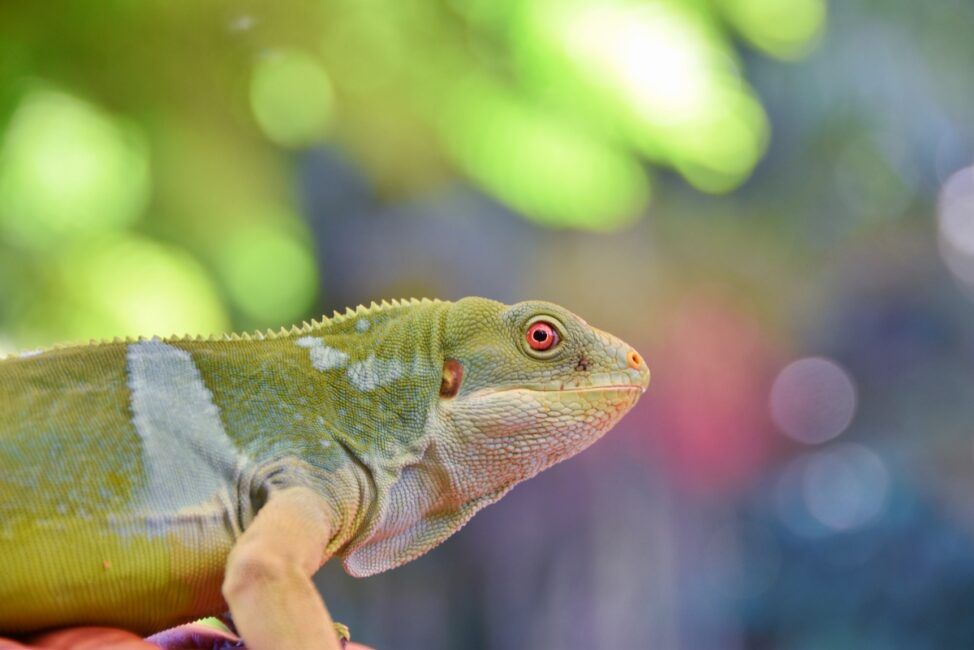



![How to Get to the Sawa-i-Lau Caves in Fiji 🦇 [2025]](https://fijipocketguide.com/wp-content/uploads/2024/09/Sawa-i-Lau-Cave-Couple-Hero-CREDIT-FijiPocketGuide.com--900x602.jpg)

